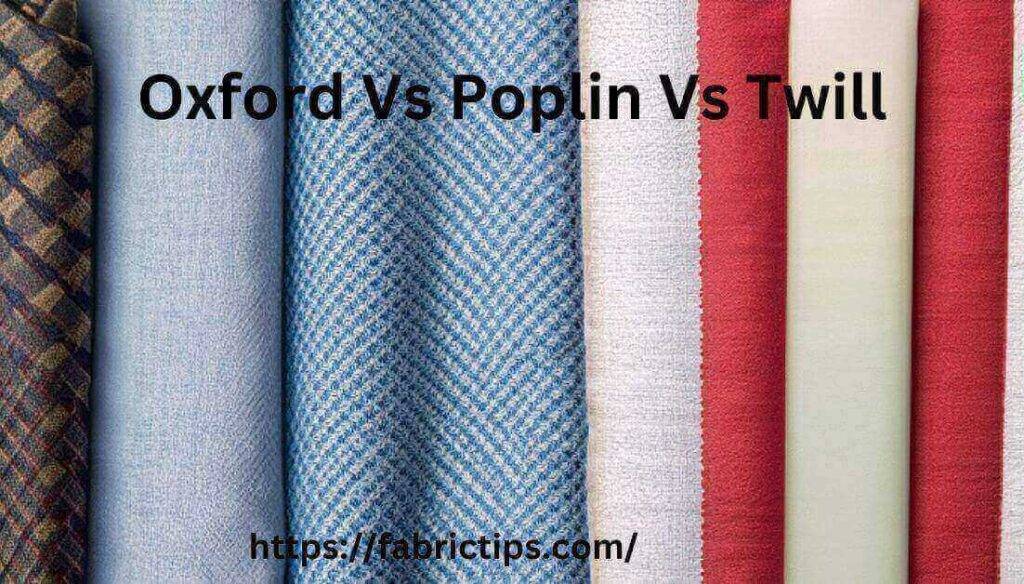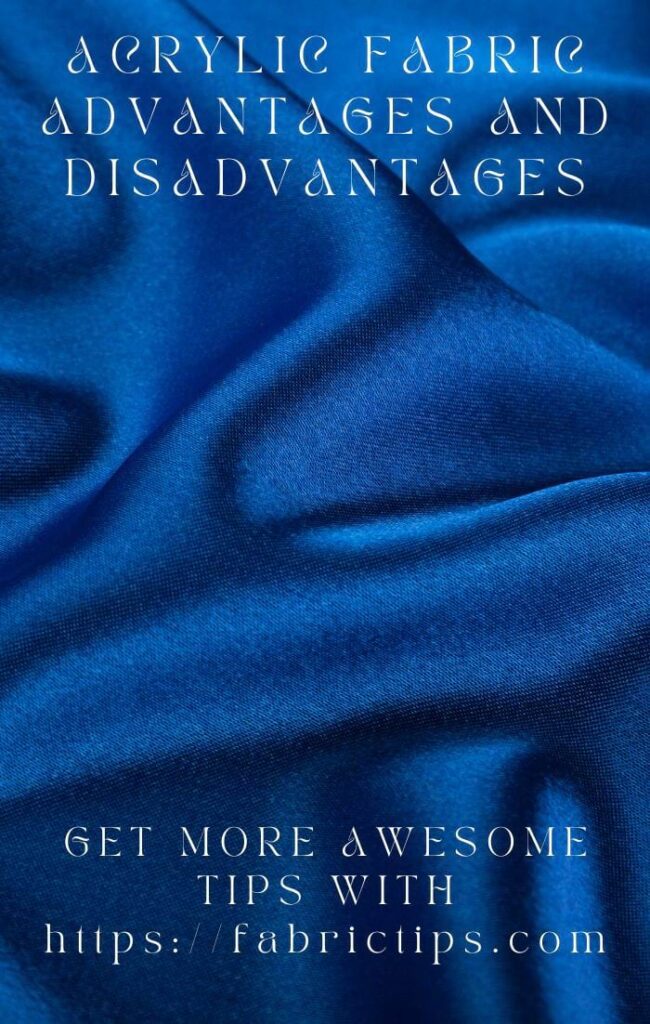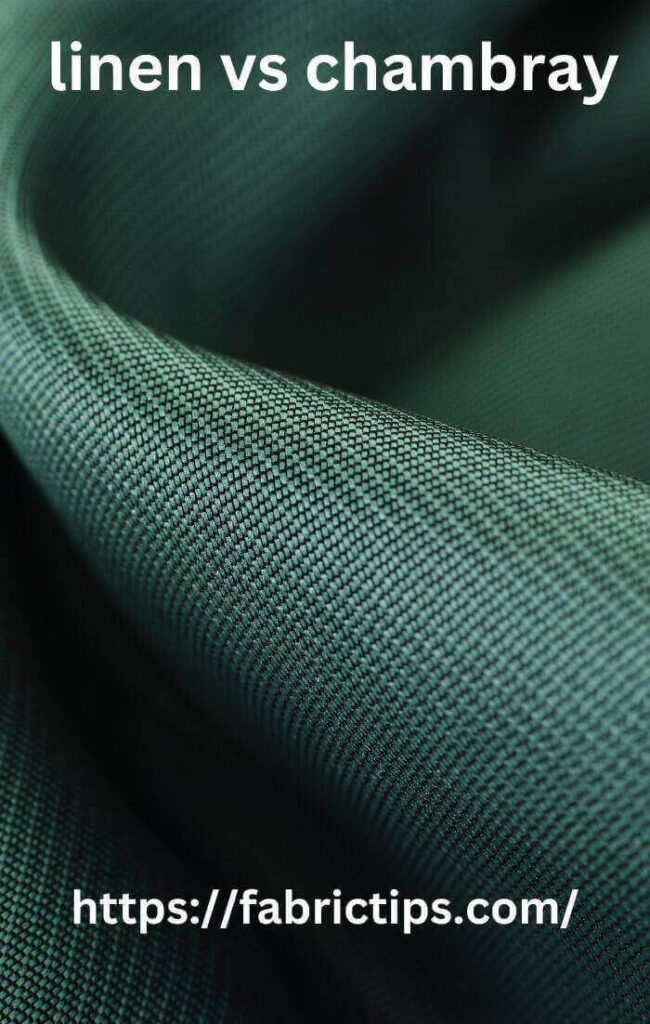Last Updated on December 13, 2025 by Wahid
Oxford, poplin, and twill are 3 of the most common types of clothing fabrics. The characteristics of each fabric type vary, making it well-suited for various garments and occasions.
The Oxford fabric type is made of cotton woven with a basket weave pattern, resulting in a textured appearance. Due to its durability, this fabric is commonly used to make casual shirts, along with dress shirts that have a more relaxed, casual appearance.
Poplin fabric is a lightweight, plain-woven cotton fabric characterized by its smooth, silky finish. Dress shirts are commonly made from this fabric, due to its ability to maintain a crease, which makes them ideal for formal wear.
In twill fabrics, diagonal ribs create a ribbed pattern. In this fabric, a diagonal pattern is weaved into the fabric, giving it a distinctive feel and look. Heavy-duty workwear is often made from twill fabrics, which are also used for dressy garments like trousers and blazers.
Oxford Vs Poplin Vs Twill: How do they differ and which is the best? Overall, fabrics have different characteristics and can be used for a variety of clothing and situations. Choosing the right fabric for your project can be made easier when you understand how they differ.
Oxford Vs Poplin Vs Twill: Comparison Chart
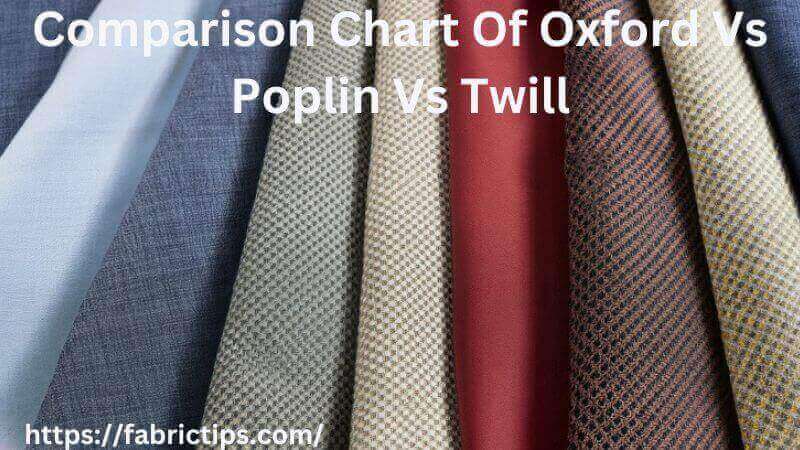
Oxford fabric is typically used for more casual clothing such as button-down shirts, while poplin is often used for dress shirts and blouses due to its smooth texture. Twill fabric is known for its strength and durability, and is often used for workwear and military uniforms. Well, let’s take a look at the 3 fabric comparison charts below.
| Fabric Type | Oxford | Poplin | Twill |
| Weave: | Basket weave with alternating over and under pattern | Plain weave with a smooth, flat surface | Diagonal weave with a visible texture |
| Weight: | Medium to heavy weight | Lightweight to medium weight | Medium weight |
| Durability: | Very durable and strong | Durable, but not as strong as Oxford | Very durable and strong |
| Breathability: | Good breathability due to the loose weave | Good breathability due to the plain weave | Moderate breathability |
| Texture: | Slightly rough texture | Smooth texture | Visible texture |
| Wrinkle-resistance: | Wrinkles easily | Resists wrinkles well | Resists wrinkles well |
| Uses: | Casual shirts, sportswear, workwear | Dress shirts, blouses, lightweight suits | Dress shirts, pants, jackets |
| Cost: | Typically mid-range to high cost | Typically mid-range cost | Typically mid-range cost |
As a whole, Oxford fabric is the heaviest and most durable of the three, with a slightly rough texture, making it ideal for casual shirts and workwear. Poplin is lightweight and smooth, making it ideal for dress shirts and blouses, while Twill fabric has a visible diagonal texture and is used for dress shirts, pants, and jackets.
All 3 fabrics have good breathability, but Oxford fabric may not be as comfortable in warmer weather due to its weight. When it comes to cost, poplins and twills are usually in the midrange, whereas Oxford is typically more expensive because of its heavier weight & durability.
Oxford Vs Poplin Vs Twill: Basic
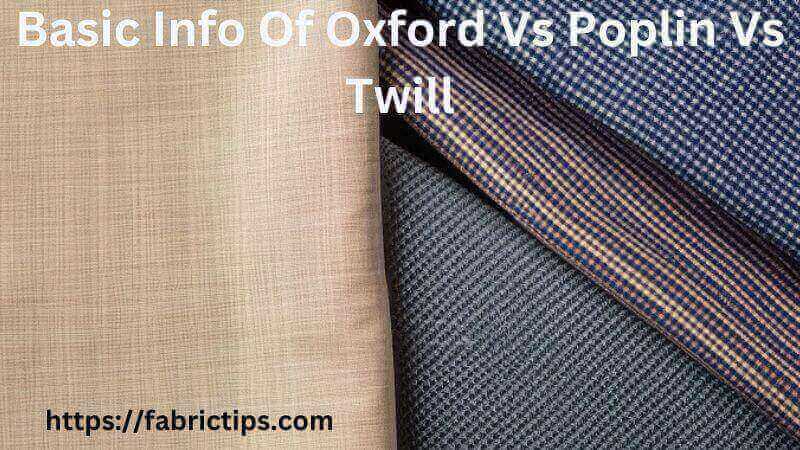
Oxford, poplin, and twill are all common fabric weaves used in the production of clothing and other textile products. The 3 are fundamentally different in the following ways:
- Oxfords: Oxfords have a basket-like texture that makes them popular fabric weaves. In most cases, it is made with a combination of 2 different yarns – colored yarns and white yarns – woven together so that they create a checkerboard pattern. Oxford fabrics tend to be comfortable, soft, and breathable, making them a popular fabric for casual shirts.
- Poplin: Poplin is a plain-weave, lightweight fabric made from fine, tightly woven threads. In terms of texture, it has a smooth, crisp texture, making it ideal for making dress shirts as well as formal clothing in general. Cotton is typically used to make poplin fabrics, though silk and blends of fibers can also be used.
- Twill: Twill is characterized by a diagonal pattern of ribs, which makes it a strong, durable fabric weave. Special weaving methods are used to manufacture it. In this process, the weft yarn passes over several warp yarns continuously, resulting in a diagonal pattern. Textiles made from twill fabric are commonly used for heavy-duty outfit items, such as jackets, jeans, and work shirts, as they are durable and strong.
Overall, the choice of fabric weave will depend on the desired properties and intended use of the final product.
Types Of Oxford Fabric
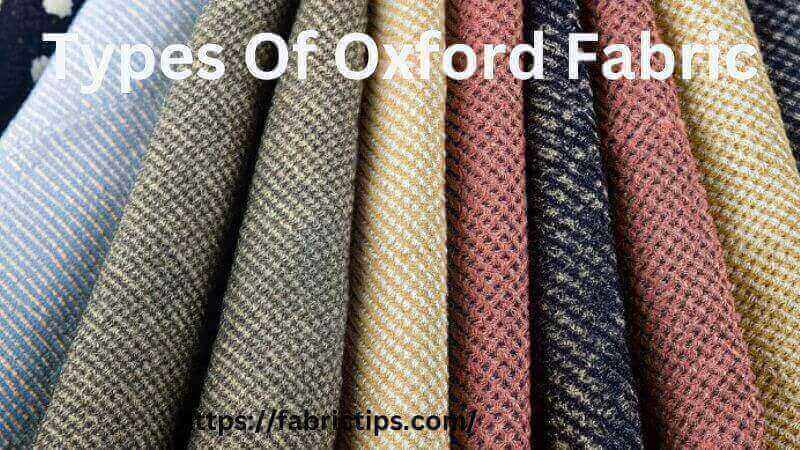
Oxford fabrics are usually woven from cotton or cotton blend yarns. An Oxford fabric’s main characteristic is its basket weave pattern, a weave created by alternating two yarns in one direction with one in the opposite direction. The fabric has this distinctive texture because of this.
A variety of Oxford fabrics can be found, including:
- Plain Oxford: This type of Oxford fabric is most common and consists of a simple, plain weave structure.
- Pinpoint Oxford: This type of Oxford fabric resembles plain Oxford, but is woven in a smaller, tighter basket weave pattern.
- Royal Oxford: This type of Oxford fabric features a basket weave pattern as well as a shinier, dressier appearance.
- Oxford Chambray: A variation of Oxford fabric, it is made with colored warp yarns alternating with white weft yarns, creating a subtle, textured appearance.
- Oxford Melange: A type of Oxford fabric whose yarns are different colors, resulting in a mottled or heathered appearance.
- Oxford Twill: These Oxford Twill fabrics have a twill weave pattern, so they have a diagonal pattern & greater substantial texture.
Oxford fabric comes in different types, each with its own particular characteristics, making it suitable for clothing and accessories of all types. Shirts, blouses, and skirts range from casual to dressier.
Types Of Poplin Fabric

Generally, poplin is a crisp fabric made of cotton with a tight weave. This fabric is typically used for dress shirts, dresses, blouses, and skirts because it is durable and versatile.
Poplin fabrics are classified according to their composition & finish as follows:
- Cotton Poplin: The most common poplin fabric is cotton poplin, a fabric made of 100% cotton. Besides being breathable and lightweight, it is also easy to maintain.
- Polyester Poplin: A combination of polyester & cotton poplin, more durable and wrinkle-resistant compared with cotton poplin alone. It is commonly used for dresses, tablecloths, and other applications that require a sturdy fabric.
- Stretch Poplin: Stretch poplin fabrics contain elastane or spandex fibers, making them more flexible and stretchy. It is particularly popular in body-hugging garments like pencil skirts & slim-fit shirts.
- Silk Poplin: Silk fibers are used to create this luxurious poplin fabric. A subtle sheen lends it an elegant appearance, making it lightweight, soft, and elegant. In high-end fashion, it is commonly used.
- Printed Poplin: Poplin fabric is also available in a wide range of prints, including bold florals and subtle stripes. There is a great deal of popularity among summer dresses, blouses, & children’s clothing.
Types Of Twill Fabric

In textiles, twill fabrics are characterized by diagonal weave patterns. This diagonal pattern results from interlacing the yarns in a specific way, giving the fabric its strength and durability.
Twill fabrics can be classified into the following types:
- Denim: Denim is a type of twill fabric that is very popular. Cotton is commonly used in jeans production and is typically made of cotton.
- Herringbone: Herringbone is a twill fabric with a zigzag pattern that looks like fish bones. In the clothing industry, it is usually used to make suits, jackets, & trousers.
- Cavalry twill: Although similar to herringbone twill, this fabric has a steeper diagonal pattern. Clothing such as jackets, pants, and skirts is often made from it.
- Chino: Cotton-based twill fabric with a distinctive soft finish. The fabric is commonly used to make pants & shorts.
- Drill: Twill fabric is a heavy-duty material often used for work wear and military uniforms.
- Gabardine: This durable and wrinkle-resistant fabric is made from twill yarns. The fabric is typically used to make coats, suits, and pants.
- Satin twill: The yarns used in this fabric are woven in a way that gives it a shiny finish. Dresses for formal occasions and evening wear are often made from it.
Dress Shirts Vs Sport shirts

There are two types of shirts: dress shirts and sport shirts. Each serves a different purpose and has a different design.
Some major differences between dress shirts vs sports shirts:
- Purpose: Dress shirts are shirts worn on formal occasions, including business meetings, weddings, and other formal events. Fabrics like cotton are more lightweight and breathable, and the fit is more tailored. In contrast, sport shirts are more casual, designed to be worn on a regular basis. The fabrics they are made of can vary and the fits can be more relaxed.
- Collar: Most dress shirts feature a more formal collar, such as spread collars or pointed collars, designed for wearing with ties. On the other hand, sport shirts typically feature a more relaxed collar, typically a button-down collar, regardless of whether it is tied or not.
- Cuffs: Dress shirts typically have cuffs that can be worn with cufflinks, in contrast with sport shirts that often do not need them.
- Design: Dress shirts usually have a traditional, tailored look with solid colors and subtle patterns. Conversely, sports shirts tend to have bolder patterns, brighter colors, as well as a more casual design.
- Fabric: Dress shirts usually consist of lightweight, breathable materials like cotton or silk, and sport shirts may be made from a variety of fabrics including flannel, denim, cotton, or linen.
Generally speaking, dress shirts and sport shirts differ primarily in their formality, collar, and cuff designs. In addition, they differ in overall style and material. Shirts are appropriate for various occasions depending on the dress code and the formality of the occasion.
Oxford Vs Poplin Vs Twill: Which Do You Prefer?
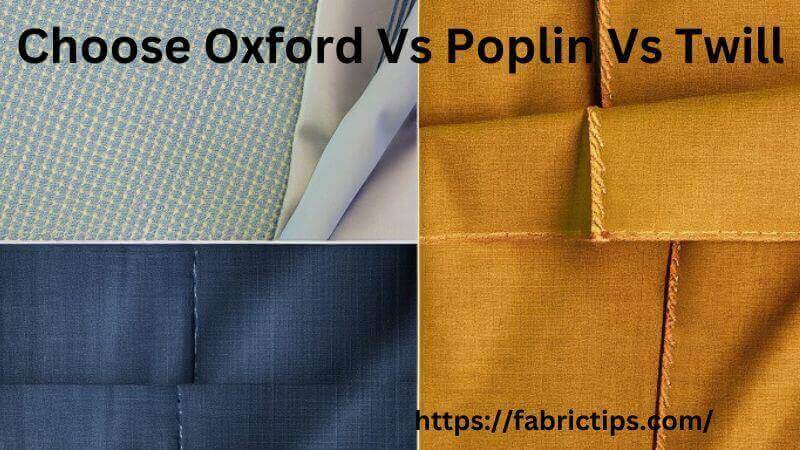
There are three basic fabrics to choose from: Oxford, poplin, and twill. Your choice depends on your personal preferences, what the occasion is, as well as what the garment is used for.
Here are some factors to consider when selecting the best fabric:
- Occasion: Oxford fabric is versatile and can be dressed up or down, making it suitable for a variety of occasions. Poplin fabric is often used for more formal occasions, such as business meetings or weddings, while twill fabric is best suited for workwear or casual wear.
- Texture: Oxford fabric has a slightly textured appearance due to its basketweave structure, while poplin fabric has a smoother and finer texture. Twill fabric has a diagonal weave pattern that gives it a unique texture. Consider which texture you prefer and what matches your personal style.
- Durability: Twill fabrics are known for their strength and durability, making them ideal for heavy-duty garments and workwear. However, poplin and Oxford fabrics are also relatively durable and have the ability to withstand regular wear & washing.
- Comfort: Choose a fabric that feels comfortable close to your skin. A poplin or oxford fabric is typically made of lightweight, breathable cotton, while a twill is typically thicker and heavier.
- Style: Fabric choices have an impact on the garment’s overall style. Casual shirts are usually made of Oxford fabric, whereas dress shirts are usually made of poplin fabric. Often, twill is used for garments that are more rugged and casual.
Ultimately, the best fabric choice will depend on your individual needs and preferences.
FAQs
01. What are indicators of shirt quality?
T-shirts are evaluated based on their thread count & ply. In addition, the manufacturer and fabric quality of the ingredients plays a significant role in determining the quality of the shirt.
02. Is poplin fabric good for summer?
Yes, of course. A poplin shirt is thin, so it’s a great choice for summer. The best choice is also to wear them with shirts designed to be put on underneath jackets and blazers.
03. Is Herringbone formal?
In fact, yes. Black-tie events and formal attire are usually adorned with herringbone weaves. Wool is the most common fabric used for herringbone patterns, which are widely used for suits & outerwear.
04. What is the difference between Oxford, poplin, and twill fabrics?
Oxford fabric has a basket weave structure and is slightly thicker and more textured than poplin, which has a fine ribbed texture. Twill fabric has a diagonal weave pattern that makes it strong and durable.
05. What are the most common uses for Oxford, poplin, and twill fabrics?
Oxford fabric is commonly used for casual shirts and button-downs. Poplin is often used for dress shirts and blouses. Twill is commonly used for workwear, military uniforms, and other heavy-duty garments.
06. Which fabric is the most breathable?
Poplin and Oxford fabrics are both fairly breathable due to their plain weave structure. However, cotton poplin is generally considered to be more breathable than Oxford fabric.
07. Which fabric is the easiest to care for?
Poplin is generally the easiest fabric to care for, as it is less prone to wrinkles and creases than Oxford and twill fabrics. It can often be machine washed and dried without shrinking or losing its shape.
08. Which fabric is the most durable?
Twill fabric is known for its durability and strength, making it a popular choice for workwear and uniforms. However, both Oxford and poplin fabrics are also fairly durable and can withstand regular wear and washing.
09. Is poplin or twill more formal?
Poplin: Poplin shirts are ideal for formal occasions, casual business wear, and formal events.
Twill: Featuring an identifiable diagonal pattern, twill drapes beautifully, resists wrinkles, and glides easily when ironed.
10. Which is thicker twill or Oxford?
Oxford cloth is woven with a basket weave, making it a versatile & soft weave. As they have slightly more thickness than twill, they are easier to care for, and their increased weight makes them easy to iron.
Final Thoughts
In conclusion, Oxford, poplin, and twill are all types of woven fabrics commonly used in clothing production. Oxford is a plain weave fabric characterized by a basketweave structure, poplin is a plain weave fabric with a fine ribbed texture, and twill is a diagonal weave fabric that is durable and strong.
Due to the wide range of options available, there is a perfect combination for every man depending on his aesthetic preferences. For both casual and formal wear, now you can choose between Oxford Vs Poplin Vs Twill shirts with confidence.
Overall, the choice between these fabrics depends on the desired look, feel, and functionality of the garment being produced. It’s important to consider factors such as the weight, texture, and weave structure of the fabric to ensure it’s suitable for the intended purpose.
